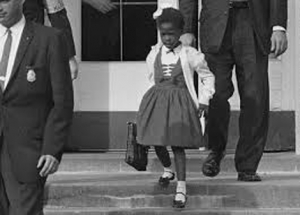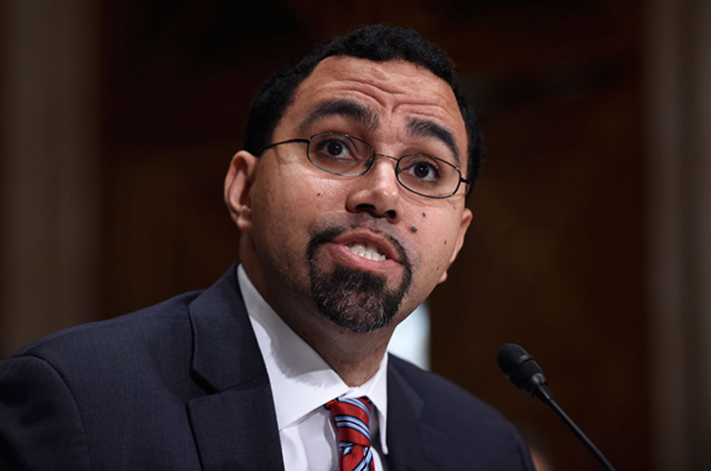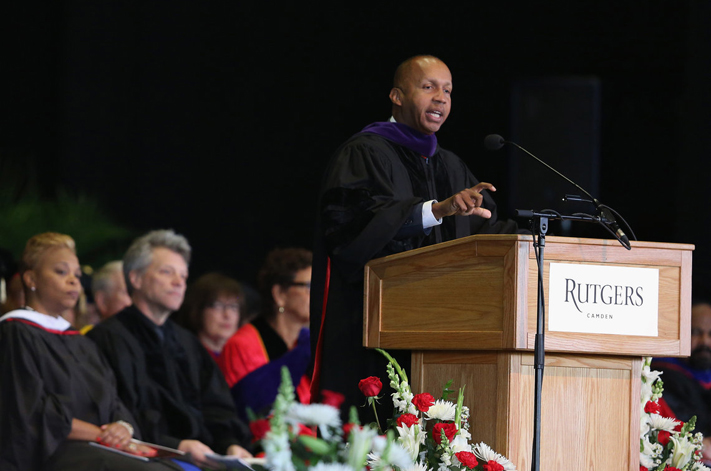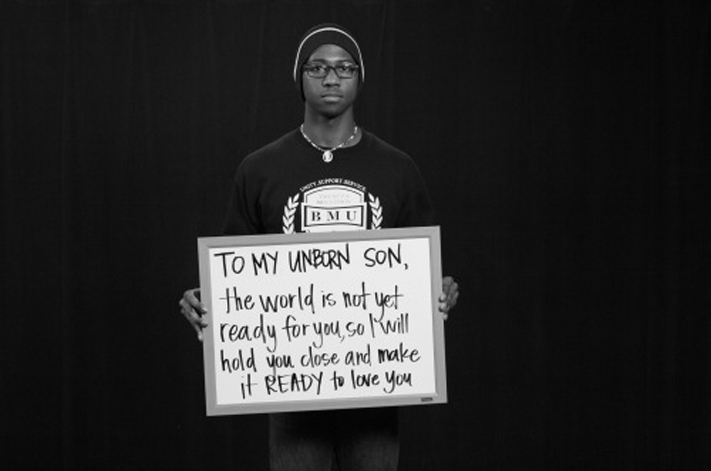Project Description
'What will the court do? Let the latest Fifth Circuit opinion, with its endorsement of race-conscious admissions, stand or plunge back into the culture wars?'
Update, June 29, 2015: The Supreme Court on Monday announced that it would again hear Fisher v. Texas, an affirmative action case in which a white woman claims she was denied admission to the University of Texas because of her race. In 2013, the Court ruled narrowly on the case, requiring the federal appeals court that had ruled against the woman, Abigail Fisher, to re-examine her arguments. Last year, the appeals court again decided against Fisher, affirming that race could be one of the factors considered in trying to diversify the student body at the university.
Months ago, Linda Greenhouse, the Supreme Court expert, asked of the Fisher case: “What will the court do? Let the latest Fifth Circuit opinion, with its endorsement of race-conscious admissions, stand unreviewed? Or plunge back into the culture wars with a case that sorely tested collegial relations among the justices two years ago and that promises to be at least as challenging a second time around?”
The court has now chosen its path. It will re-engage.
In 2013, ProPublica published what became one of the most provocative analyses of the Fisher case. It highlighted an overlooked, deeply ironic fact about the case: when one actually looked at Fisher’s arguments, she actually had not been denied admission because of her race, but rather because of her inadequate academic achievements. Read that analysis, originally published March 18, 2013, below.
Original story:
That’s how Oliver Brown, a hard-working welder and assistant pastor in Topeka, Kan., became the lead plaintiff in the lawsuit that would obliterate the separate but equal doctrine. His daughter, whose third-grade innocence posed a searing rebuff to legal segregation, became its face.
Nearly 60 years after that Supreme Court victory, which changed the nation, conservatives freely admit they have stolen that page from the NAACP’s legal playbook as they attempt to roll back many of the civil rights group’s landmark triumphs.
In 23-year-old Abigail Noel Fisher they’ve put forward their version of the perfect plaintiff to challenge the use of race in college admissions decisions.
Nearly 60 years after that Supreme Court victory, which changed the nation, conservatives freely admit they have stolen that page from the NAACP's legal playbook as they attempt to roll back many of the civil rights group's landmark triumphs.
Publicly, Fisher and her supporters, chief among them the conservative activist who conceived of the case, have worked to make Fisher the symbol of racial victimization in modern America. As their narratives goes, she did everything right. She worked hard, received good grades, and rounded out her high school years with an array of extracurricular activities. But she was cheated, they say, her dream snatched away by a university that closed its doors to her because she had been born the wrong color: White.
The daughter of suburban Sugar Land, Texas, played the cello. Since the second grade, she said, she dreamed of carrying on the family tradition by joining her sister and father among the ranks of University of Texas at Austin alumni.
And the moment for her to lend her name to the lawsuit might never be riper: The Supreme Court has seated its most conservative bench since the 1930s. The Court is expected to issue a decision any week now in what is considered one of the most important civil rights cases in years.
On a YouTube video posted by Edward Blum, a 1973 University of Texas graduate whose nonprofit organization is bankrolling the lawsuit, she is soft-spoken, her strawberry blond hair tucked behind one ear. Not even a swipe of lip gloss adorns her girlish face.
“There were people in my class with lower grades who weren’t in all the activities I was in, who were being accepted into UT, and the only other difference between us was the color of our skin,” she says. “I was taught from the time I was a little girl that any kind of discrimination was wrong. And for an institution of higher learning to act this way makes no sense to me. What kind of example does it set for others?”
It’s a deeply emotional argument delivered by an earnest young woman, one that’s been quoted over and over again.
Except there’s a problem. The claim that race cost Fisher her spot at the University of Texas isn’t really true.
In the hundreds of pages of legal filings, Fisher's lawyers spend almost no time arguing that Fisher would have gotten into the university but for her race.
In the hundreds of pages of legal filings, Fisher’s lawyers spend almost no time arguing that Fisher would have gotten into the university but for her race.
If you’re confused, it is no doubt in part because of how Blum, Fisher and others have shaped the dialogue as the case worked its way to the country’s top court.
Journalists and bloggers have written dozens of articles on the case, including profiles of Fisher and Blum. News networks have aired panel after panel about the future of affirmative action. Yet for all the front-page attention, angry debate and exchanges before the justices, some of the more fundamental elements of the case have been little reported.
Race probably had nothing to do with the University of Texas’s decision to deny admission to Abigail Fisher.
In 2008, the year Fisher sent in her application, competition to get into the crown jewel of the Texas university system was stiff. Students entering through the university’s Top 10 program — a mechanism that granted automatic admission to any teen who graduated in the upper 10 percent of his or her high school class — claimed 92 percent of the in-state spots.
Fisher said in news reports that she hoped for the day universities selected students “solely based on their merit and if they work hard for it.” But Fisher failed to graduate in the top 10 percent of her class, meaning she had to compete for the limited number of spaces up for grabs.
She and other applicants who did not make the cut were evaluated based on two scores. One allotted points for grades and test scores. The other, called a personal achievement index, awarded points for two required essays, leadership, activities, service and “special circumstances.” Those included socioeconomic status of the student or the student’s school, coming from a home with a single parent or one where English wasn’t spoken. And race.
Fisher failed to graduate in the top 10 percent of her class, meaning she had to compete for the limited number of spaces up for grabs.
Those two scores, combined, determine admission.
Even among those students, Fisher did not particularly stand out. Court records show her grade point average (3.59) and SAT scores (1180 out of 1600) were good but not great for the highly selective flagship university. The school’s rejection rate that year for the remaining 841 openings was higher than the turn-down rate for students trying to get into Harvard.
As a result, university officials claim in court filings that even if Fisher received points for her race and every other personal achievement factor, the letter she received in the mail still would have said no.
It’s true that the university, for whatever reason, offered provisional admission to some students with lower test scores and grades than Fisher. Five of those students were black or Latino. Forty-two were white.
Neither Fisher nor Blum mentioned those 42 applicants in interviews. Nor did they acknowledge the 168 black and Latino students with grades as good as or better than Fisher’s who were also denied entry into the university that year. Also left unsaid is the fact that Fisher turned down a standard UT offer under which she could have gone to the university her sophomore year if she earned a 3.2 GPA at another Texas university school in her freshman year.
In an interview last month, Blum agreed Fisher’s credentials and circumstances make it difficult to argue — as he and his supporters have so ardently in public — that but for her race Fisher would have been a Longhorn.
“There are some Anglo students who had lower grades than Abby who were admitted also,” Blum told ProPublica. “Litigation like this is not a black and white paradigm.”
In an interview last month, Blum agreed Fisher's credentials and circumstances make it difficult to argue — as he and his supporters have so ardently in public — that but for her race Fisher would have been a Longhorn.
Blum started his one-man nonprofit, the Project on Fair Representation, in 2005. The organization is funded by deep-pocketed conservatives to, according to its website, influence “jurisprudence, public policy, and public attitudes regarding race and ethnicity” in voting, education, contracting and employment. To do so, Blum — who is not a lawyer — helps arrange pro bono representation to fight race-based policies that were meant to address inequalities.
According to a Reuters profile, Blum has brought at least a dozen lawsuits against such programs and laws — including four that made it to the Supreme Court. He has two on the current docket, Fisher and the Shelby County, Ala., case challenging a key provision of the Voting Rights Act.
In the Fisher case, while the young woman may have lent her name to the lawsuit, the case before the Court has very little to do with her. Her name appears just five times in the thousands of words that make up the body of the complaint. She has already gone on to graduate from Louisiana State University, her second choice, and is working in finance at a firm in Austin.
Asked by a news reporter what harm she had suffered, she cited only her inability to tap into UT’s alumni network and possibly missing out on a better first job. If she wins, Fisher seeks only the return of her application fee and housing deposit — a grand total of $100 in damages.
So while the Fisher case has been billed as a referendum on affirmative action, its backers have significantly grander ambitions: They seek to make the case a referendum on the 14th Amendment itself. At issue is whether the Constitution’s equal protection clause, drafted by Congress during Reconstruction to ensure the rights of black Americans, also prohibits the use of race to help them overcome the nation’s legacy of racism.
Asked by a news reporter what harm she had suffered, she cited only her inability to tap into UT's alumni network and possibly missing out on a better first job. If she wins, Fisher seeks only the return of her application fee and housing deposit — a grand total of $100 in damages.
The Supreme Court has never ruled that the Constitution bars any and all laws and government programs that consider race. But Blum and his supporters, seeing an opening with the current Court, seek to overturn more than a century of precedent.
The true crux of the suit is not Fisher’s failed application, but that government officials violate the constitutional rights of white Americans when they consider race in a way that might help African-Americans and Latinos.
“An argument can be made that it is simply impossible to tease out down to the last student who would have been admitted, and who would have not been admitted, had they been a different skin color,” Blum said. “What we know is skin color is weighed and ethnicity is weighed by the University of Texas in their admissions process, and that alone is enough to strike down the plan.”
Blum and his supporters say the reasoning is simple. The Constitution is colorblind and the equal protection clause of the 14th Amendment prohibits the government from treating people differently because of race.
It’s an argument first successfully championed by the NAACP and other civil rights groups, most notably in the landmark Brown v. Board of Education case, in which the Supreme Court declared the notion of “separate but equal” to be a fallacy.
“In its history, colorblindness has this progressive, anti-racist push behind it,” said Ian Haney-López, a constitutional scholar at the University of California, Berkeley School of Law.
But following the Brown decision, the very groups that had ardently — and violently — defended laws mandating separation by race used the notion of a colorblind Constitution to challenge court orders to integrate schools.
“They began to say, yes, the Constitution is colorblind, and so the state cannot distinguish between races when it tried to remedy segregation,” he said.

U.S. Deputy Marshals escort Ruby Bridges from William Frantz Elementary School in New Orleans, La., in November 1960. (AP Photo
Initially, the Supreme Court unambiguously knocked those arguments down. In a 1971 ruling, it said that government could not mandate colorblindness when doing so would defeat the integration requirement of Brown v. Board of Education. A few years later, in a ruling on affirmative action, Justice Harry Blackmun wrote, “In order to get beyond racism, we must first take race into account. There is no other way.”
But as the Supreme Court’s make-up has grown more conservative, it has taken up a steady stream of so-called reverse discrimination cases, in which white plaintiffs have argued that race-specific measures born of the civil rights movement discriminate against white Americans and violate the 14th Amendment.
Supreme Court decisions have eroded programs and laws that use race to remedy inequalities, but not eliminated them altogether. And in a 2003 opinion written by centrist Sandra Day O’Connor, the justices narrowly upheld affirmative action in college admissions when it is the only means to ensure diversity.
But the Court’s make-up changed in what scholars consider a significant way when Samuel Alito, considered the third most conservative Supreme Court justice since 1937, replaced O’Connor in 2006. Since then, several justices have made their constitutional disdain for race-conscious programs known. In a controversial 2007 decision, Chief Justice John Roberts sent a clear message when he used the equal protection argument at play in Brown v. Board of Education to strike down voluntary desegregation plans in schools.
But as the Supreme Court's make-up has grown more conservative, it has taken up a steady stream of so-called reverse discrimination cases, in which white plaintiffs have argued that race-specific measures born of the civil rights movement discriminate against white Americans and violate the 14th Amendment.
And just last month during oral arguments over the constitutionality of a key aspect of the Voting Rights Act, Justice Antonin Scalia derisively called what’s considered the most successful civil rights law in history a “racial entitlement.”
Public opinion on race has changed over time as well. In the 1950s, surveys show, most white Americans believed that black Americans faced substantial discrimination but that they themselves experienced little. Today, despite gaping disparities between black and white Americans in income, education, health care, homeownership, employment and college admissions, a majority of white Americans now believe they are just as likely, or more likely, to face discrimination as black Americans.
Blum chose the University of Texas to mount what could be a decisive challenge to affirmative action in college admissions because it already had what was regarded as a “race-neutral” process — the Top 10 program. Since many Texas high schools remain segregated, taking the top 10 percent of students from black and Latino high schools ensured a substantial population of students of color at the UT.
As a consequence, Blum believed he could challenge whether the additional use of race to fill out the entering class passed constitutional muster.
To get standing in court, Blum needed a victim. That’s when he started looking for a version of the Brown family, someone who could represent the arguable hurt caused when public officials used race.
This approach, too, mirrors an NAACP tactic from half a century ago. Then, knowing the Supreme Court was unlikely to throw out segregation in one fell swoop, the civil rights group brought a narrower challenge to segregated school facilities first.
One of those cases, ironically, targeted the same university as Blum — the University of Texas at Austin. The university, which had been closed to black students since its founding, denied the law school application of Heman Marion Sweatt because the state constitution required that black and white students attend separate schools.
Because Texas had no black law school, the NAACP sued, arguing that the state violated the constitutional mandate to provide equal facilities for black and white students. The Supreme Court ruled that the hastily put together black law school created to avoid admitting Sweatt could not possibly be equal. It ordered Texas to admit Sweatt as its first black student in 1950.
That suit launched the stone that would shatter separate but equal just four years later when the Court struck down segregation in schools in Brown.
Blum and his supporters hope to use the Fisher case, and the 14th Amendment challenge to the Voting Rights Act that Blum is also behind, in the same way.
According to Blum, the Constitution sees affirmative action policies — in college, in contracting, in employment — and Jim Crow laws as twin evils.
“I don’t see the distinction,” he said.
But several constitutional scholars interviewed for this piece dispute this notion. Neil Siegel of Duke University called this interpretation of the 14th Amendment “perverse.” Georgetown law professor Girardeau A. Spann called it “discriminatory.”
While the 14th Amendment doesn’t mention race, the drafters went on to pass race-specific legislation aimed at helping former slaves and other black Americans overcome more than a century of racial oppression.
Erwin Chemerinsky, founding dean of the University of California, Irvine School of Law, said that the concept of colorblindness holds great rhetorical appeal but that “there is no basis for concluding that the 14th Amendment equal protection clause requires colorblindness.” In drafting the 14th Amendment, he said, Congress recognized “an enormous difference between a white majority disadvantaging minorities and a white majority acting to remedy past discrimination.”
Conservatives challenging these types of programs purport to champion the legacy of the civil rights movement, Haney-Lopez said, but the historical roots of their efforts are much more cynical.
“I think that is incredibly important that people realize that today’s proponents of colorblindness pretend that they are the heirs to Thurgood Marshall and John Marshall Harlan,” he said. “But that is a lie. They are the heirs of Southern resistance to integration. And the colorblindness arguments that they use come directly from the Southern efforts to defeat Brown v. Board of Education.”
Ilya Shapiro, a senior constitutional studies fellow at the Cato Institute, which filed an amicus brief supporting Fisher, thinks otherwise.
“I am not going to speak to anyone else’s motives. It is unfair to paint people with the Jim Crow brush because they have those kinds of arguments,” he said. “I don’t like people being judged based on the color of their skin.” If a program “treats people different because one has a different skin color, I find that offensive and I think the Constitution does as well.”
But when asked why the drafters created programs targeted to black Americans if they did not intend the Constitution to allow the government to use race to help minority groups, Shapiro said, “It was a curious period.”
At the same time Congress drafted the equal protection clause, he said, it also “voted for segregated schools in the District of Columbia.”
That example is the very same one that segregationists Strom Thurmond and Richard Brevard Russell used when they drafted the 1956 Southern Manifesto urging officials to resist the Supreme Court’s use of the equal protection clause to overturn school segregation.
The impact of a ruling that bans all racial considerations by universities, employers and governments “could have devastating impact on the ability to overcome past inequalities,” Siegel said.
Few experts think Blum and his supporters are apt to win that big a victory in the Fisher case. And so he will likely be on the hunt again for another case, and another perfect plaintiff.
Update, July 16, 2014: A federal appellate court has ruled in favor of the University of Texas at Austin’s affirmative action program, allowing the university to continue considering race as part of its “holistic” review process that also takes into consideration socioeconomic status, whether English is spoken at home and if students come from single-parent homes. In June of 2013, the Supreme Court avoided a larger ruling on affirmative action, instead remanding the case back to the lower court for reconsideration, saying the lower court had not properly applied “strict scrutiny” in judging UT’s use of race.
Tuesday, the U.S. Court of Appeals for the Fifth Circuit in a 2-1 decision ruled UT’s program was in fact narrowly tailored and did meet the “strict scrutiny’ standard.
“The impact of the holistic review program on minority admissions is already narrow, targeting students of all races that meet both the competitive academic bar of admissions and have unique qualities that complement the contributions of Top Ten Percent Plan admittees,” the Court wrote. “The data also show that white students are awarded the overwhelming majority of the highly competitive holistic review seats.”
The order also explicitly addresses the high degree of segregation in Texas schools, the often inferior education they provide, that its direct correlation to the lower test scores of black and brown students seeking admission to the flagship school.
Read the entire ruling here, and also ProPublica’s report examining whether whether class-based affirmative action is a good alternative to race-based.
ProPublica is a Pulitzer Prize-winning investigative newsroom. Sign up for their newsletter.
This piece was reprinted by EmpathyEducates with permission or license. We thank the Auuthor, Nikole Hannah-Jones and ProPublica for their kindness, research and enduring mission to practice and promote investigative journalism in the public interest.










